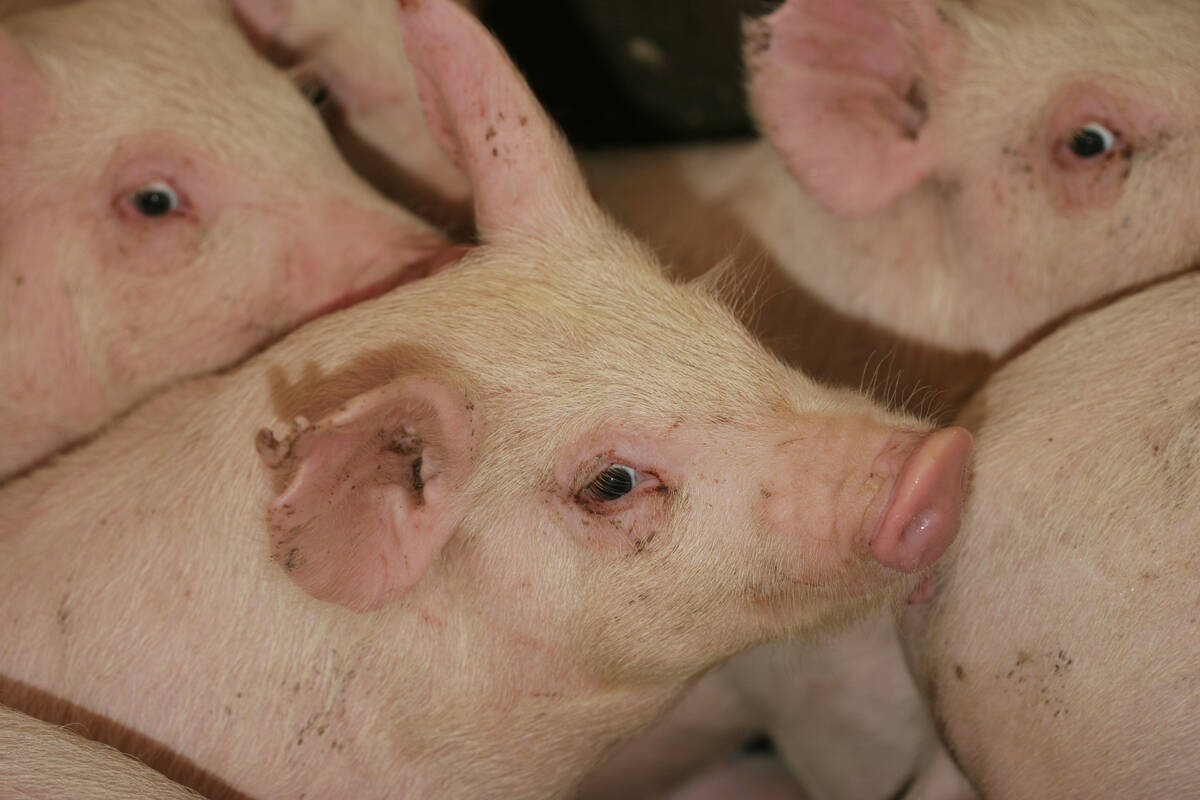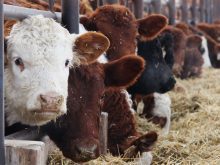EDMONTON – Ever since a case of BSE was discovered in Canada in 2003, producers, politicians and community leaders have been trying to inject life into the slumping beef industry.
BSE drove prices down and kept Canada out of international beef and cattle markets.
Many people in the industry looked to community owned packing plants as a possible solution. By owning the plants, they reasoned, producers would be able to control the prices they received for their beef, freeing them from having to accept lower prices from the multinational packing plants. The concept would also enable producers and communities to earn money from the slaughtering end of the business.
Read Also

The Western Producer Livestock Report – September 25, 2025
The U.S. national live price average for barrows and gilts was $81.21 Sept. 17. It was $78.37 Sept. 9. U.S. hogs averaged $106.71 on a carcass basis Sept. 17, up from $106.10 Sept. 9.
In many communities, the idea never got beyond discussion, but in six locations money was raised, plants designed and cattle slaughtered. Few of those operations lasted long enough to celebrate their first anniversary and some filed for receivership or quit before even opening their doors.
During a Commercial Cattlemen’s Day Symposium held Nov. 4 at Farmfair International in Edmonton, representatives from four failed producer-owned packing plants in Canada and the United States talked about the lessons they learned.
Gencor Foods
Mark Ishoy and a group of Ontario dairy farmers bought the mothballed MGI packing plant in Kitchener, Ont., to try to boost beef prices and secure a place to kill cull dairy cows in Eastern Canada. By buying an existing packing plant, the group was able to get cattle moving through the plant just eight months after the initial idea.
“It’s a tough operation to run,” said Ishoy, formerly managing director and general manager of Gencor Foods.
From the beginning, the plant wanted producers to buy long-term lease hooks to guarantee a supply of cattle. Few producers shelled out money for guaranteed slaughter space.
The plant initially topped up the money it paid to producers by $100 to $150 to attract cattle. The additional cash and a closed American border helped secure a steady supply.
As the American border opened to older cattle and the top-up was eliminated, producers stopped supporting the plant and delivered their cattle to the highest bidder.
“The supply of cattle in Ontario got to be an issue,” said Ishoy, now a sales representative for Eastern Meat Solutions.
Gencor also faced quality issues. Animals coming to the plant at the same weight didn’t grade or cut the same, which affected profitability.
The group also assumed most retailers would welcome a new supplier, but grocery stores were reluctant to switch suppliers and would only buy from Gencor at discounted prices.
The plant closed in March and filed for bankruptcy protection.
Border Beef
When the American border closed to Canadian beef, cull cows became almost worthless. What was once a good source of income for farmers disappeared. A group of cattle producers near Lloydminster wanted to reclaim some of that value and formed Border Beef.
“We wanted direct involvement in our cattle and reclaim some of the profit being taken by the packing plants,” said Gary Etherington, a director with Border Beef, a major shareholder of Ranchers Beef in Stony Plain, Alta.
The cattle producers wanted to pool their cattle for a greater return, more value added beef products and ownership of a packing plant for guaranteed access.
Instead of building a plant, the group joined forces with the Ranchers Beef packing plant under construction west of Edmonton. The group made an investment in the plant.
Key to their success would be 100 percent traceability of product.
“It was an important part of what we would be,” Etherington said.
But again, few retailers were willing to take a chance on a new organization and possibly for a less reliable supply of beef.
“We found there was more fear than acceptance,” he said.
Before the plant even opened, Etherington said it was clear it would not fly. The meat slaughtering equipment still sits in containers outside the new building, waiting for someone to take over the project.
The group knew there was trouble when Ranchers Meats in southern Alberta shut its doors. If that group of seasoned industry insiders couldn’t make it with their connections, there was little hope for their fledgling group.
Daryl Charlton, chair of Border Beef, said group members now know they didn’t have enough money to build and start the business.
“I think we knew we had to have more capital, but we didn’t know it was that significant for startup,” said Charlton.
Etherington said he now estimates that operating funds need to be double that invested in building costs and that is possible only if all cattle producers in the area are on side.
“One thousand producers invested $40 million to get it started and 20,000 sat on their wallet.
“It’s really disheartening for me to spend four or five years putting a value added investment together, get the door opened, but other parts of the industry wouldn’t allow us through.”
Natural Valley Farms
Dave Fiddler was so excited about Natural Valley’s proposal to build a packing plant in Neudorf, Sask., and another across the border in Manitoba that he quit his job to work full time on the project.
Combined, the two plants would kill 250 head a day, according to the plan.
Looking back, having two plants likely added to their downfall, Fiddler said.
Their aim was to find a niche market: kill natural beef, mature beef and bison. Their consumer research showed people believed in a natural, local product that was traceable back to the producer.
“We were operating as a true value chain. We thought we had a secure cattle supply,” said Fiddler.
The plant also passed carcass data back to producers and good cattle earned producers rewards for quality. Plant officials realized all cattle don’t have the same carcass quality. Sometimes there was as much as $200 difference in carcass value and only 20 pounds difference in live weight.
“While the animals look the same, there’s a great difference in each animal,” said Fiddler.
In January 2005, the group received European Union certification and started processing. From the beginning, they were undercapitalized. The plant took 18 months longer to build than anticipated and somewhere along the line the group strayed from its business plan.
“We got off track and tried to compete in the commodity market,” said Fiddler.
Within one year the plant was in poor financial straits.
Producers who had invested thousands of dollars walked away. The plant was placed into receivership at the end of October.
“A lot of people lost a lot of money,” he said.
The plant is now leased and operating as a horse slaughter plant. It will either continue to be leased or it will be sold.
Before the collapse of the world financial markets, there was talk of taking another run at raising producer money and taking a second shot.
Fiddler doesn’t know if investors have the stomach for that now.
Dr. Rod Bowling
On paper, the idea for the 1,650 head a day slaughter plant was perfect.
Future Beef in Arkansas City, Kansas, had guaranteed sales to Safeway, a branded product, markets for pet treats and sales for meat cuts that North American consumers won’t eat.
“We had all the parts,” said Dr. Rod Bowling, a former National Cattlemen’s Beef Association manager.
It took two years to develop a business plan. Part of it was building a brand that would attract customers away from Wal-Mart. Special feeding programs were designed to create a bright red meat for the grocery stores.
“We wanted meat colour that sparkled.”
Every part of the process had to exceed tough food safety guidelines from the producer through every step of the plant.
A system was designed to produce a uniform product. Feeder cattle were sorted to ensure all lots were the same. The day the animals entered the feedlot, they were also assigned a slaughter date. Cattle producers could watch their cattle slaughtered and get an instant carcass readout. Before the hide was removed, the animal was washed and the hair removed to reduce potential E. coli infections.
In-store tracking showed when the beef was in the counter, sales for the entire store rose 23 percent.
The animal treats made more money than the quality beef and the case-ready offal products were a hit.
Bowling said their idea to provide a high end branded product was great, but the company took on too much, too quickly including cattle feeding, genetics, hair removal and specialty products exclusive to Safeway.
The death knell for the plant was its exclusive marketing arrangement with Safeway. Plant organizers believed that working with the food giant would be beneficial for both companies, but Safeway walked away from its investment.
“We made mistakes and got into negative circumstances and it was difficult to reverse,” Bowling said.
The company filed for bankruptcy a year after it opened its doors.














